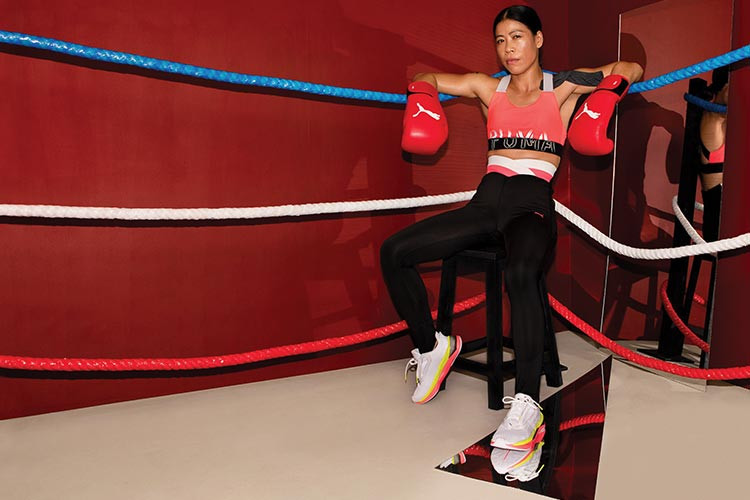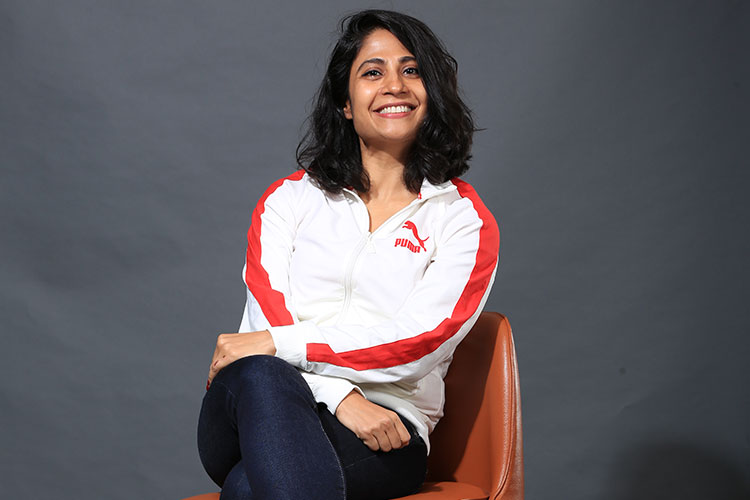With its latest ‘Propah Lady’ campaign, sportswear brand Puma continues to celebrate and empower women, who are an important consumer segment for the brand.
Debosmita Mazumder, Head of Marketing, Puma tells us about the objective behind the campaign and explains its approach when it comes to partnerships with celebrities and athletes
Q] Puma recently launched the ‘Propah Lady’ campaign that saw a great deal of traction across social media. What was the objective behind this campaign?
The women’s category has been very critical for Puma, especially in the past three years. This year, we wanted to do something new and create a message that is empowering and real for women. We wanted to reflect something that women are already feeling, and not push something that the brand wants to say. We have also recognised that there is a shift today, where we see a lot of women who are redefining the rules and taking charge of their own lives. While we are still at a point where women have a long way to go in terms of achieving absolute freedom in doing whatever they want, we envisioned that this campaign would be a celebration of the women that have already made achievements by carving their own path and breaking the definition of what it means to be a ‘proper lady’. That’s really the key objective behind the campaign.
Q] What are the kind of spends you’ve devoted to the ‘Propah Lady campaign?
It is predominantly a digital campaign but we cannot really give away our exact spends. However, the kind of reach that this campaign has given us has been amazing and we’ve seen a strong response from women across ages and backgrounds, which is also organic. Women across the country have definitely been able to relate to it.
Q] How important is the female consumer base to Puma? Given that your campaigns have focused a lot on women consumers lately, what kind of uptick have you seen in terms of sales from this segment?
Puma is currently the number one brand in the sportswear and active-wear category in India. Puma entered into the Indian market back in 2006, and since then we have been able to establish ourselves as the market leader in the country with over 360 physical stores across 120 cities. We have constantly been seeing double digit growth in the last 2-3 years, which is indicative of how strong our brand presence and image has become in India. Over the years, the consumer has evolved and that means the category has evolved too. The women’s category specifically is one category we are seeing great traction and growth in, and it is an important one for the brand too. The women’s business contributes about 30% of the brand’s business. One of the important trends that we have observed lately is that while we have always seen good growth and sales in the metros and Tier I markets, there is a notable increase in growth coming from Tier II markets. We are seeing for instance a significant increase in orders especially on e-commerce platforms from these markets.
Q] What is your approach when it comes to the Tier II markets? Are your sales largely driven by e-commerce channels in these markets?
E-commerce is definitely catering to the demand from the Tier II and smaller markets, but like I said our store presence with 350 stores across 120 cities is definitely robust. It is not a one-platform approach that we are looking at, and our physical store footprint also includes the smaller markets. Of course, going forward, e-commerce will play an important part in driving growth for the brand across these markets but ours will always be a multi-channel approach. We let our consumers decide where they want to shop and interact with the brand. Over the past few years, we have been able to find the right balance between online and offline – we want to drive growth for both channels. The idea is to not let one channel grow at the cost of the other. Our objective is to ensure that the customer has a convenient and positive shopping experience.
Q] In the past Puma has been a prominent partner with big sporting events and properties like the ISL. How have these associations paid off for the brand? Are there any other associations you’re looking at in the future for Puma?
Currently we are partnering with the Delhi half-marathon. In terms of football, we are also evaluating possible partnerships with different properties. In the last couple of years for Puma, it has been all about signing on performers like Mary Kom and Dutee Chand for example, and thereby bringing to the fore the sports that they represent.

ABOUT THE BRAND
Puma is one of the world’s leading sports brands, designing, developing, selling and marketing footwear, apparel and accessories. The brand offers performance and sport-inspired lifestyle products in categories such as football, running and training, basketball, golf and motorsport. The Puma Group owns the brands Puma, Cobra Golf and Dobotex. The company distributes its products in more than 120 countries, employs more than 13,000 people worldwide, and is headquartered in Herzogenaurach/Germany.
FACTS
Creative & Digital agency: Digitas
PR Agency: Tandem Communication
Q] Puma works with quite a few influencers across different sports. Among the male sports stars, you still work with Virat Kohli. What is the brand’s approach when it comes to riding on influencer appeal?
Thierry Henry, who is one of our assets globally, when he was in India had once said in an interview that it is not about an athlete choosing a brand or about a brand choosing an asset. He pointed out that the best partnerships happen when they choose each other. That’s the kind of approach we have when it comes to our assets. It is really about what the brand stands for, and what our asset represents. You will see this best demonstrated even in our ‘Propah Lady’ campaign. If you look at someone like Mary Kom, who fought all odds to become a world champion and achieve the status of a legend, those are the kinds of stories the brand would like to champion and represent. We are clear that there needs to be a symbiotic relationship between brand and asset for every influencer association.
Q] Speaking about the active sportswear category broadly, what are some of the factors that you think will drive growth for the category and for Puma specifically?
There are multiple factors driving growth for the category. People’s lifestyles are changing and fitness is becoming an important part of that. In addition, Indians are increasingly taking to sport both professionally and recreationally. The number of medals Indian sport stars are winning at big global sporting events are driving more people to take up sports recreationally. There is also a great deal of exposure for Indian women in sports today, and that has made an impact in terms of growth for the women’s wear portfolio.. So all of these factors are working together to drive growth for the product category and also for Puma.
PROFILE
Debosmita Majumder is the Marketing Head at Puma India. In this role, she is responsible for developing marketing strategies and driving business impact while leading creative, digital, influencer and e-commerce marketing. Having joined the company in 2015, Majumder is today also part of the Puma leadership team in India. She leads asset management - strategizing and conceptualizing new signings and managing relationships with ambassadors like Virat Kohli, Mary Kom, Sara Ali Khan and Dutee Chand. A marketer with a passion for sports, Majumder has also played professional tennis for over
10 years.
MARKETING TIP
Always question the status quo, and try out new avenues. Marketing for me is constantly about pushing the boundary.























